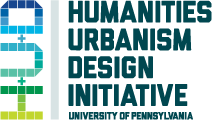Coursework
ITAL/ARCH 311: Venice—Self-Representation, Performance, and Reception
Fall 2015
H+U+D CITY SEMINAR
Description:
Defined by Petrarch as “mundus alter,” that is, another world, Venice’s seductive power stems from her subtle balance of contradictions: her architecture of masses emerging weightlessly from the lagoon, her urban gardens planted in the middle of the sea—as Henry James aptly observed—and her Veniceness—venezianità—taking shape alongside a melting pot of cultures.
This course examines the Venetians’ multiple attempts to pin down and represent aspects of their elusive identity in written, visual and built form; the release of their social identities in the ephemeral realities of the carnival and the theater; and the reception of Venetian character and traditions by the foreign travellers that have been fascinated with the lagunar city throughout the centuries.
Structured as a series of topics and case studies (including primary visual and written sources; buildings and gardens) the course aims to introduce students to the material and cultural landscape of Venice and develop their ability to “read” the urban fabric and its unique physical context (which in the past extended beyond the islands of the lagoon) by identifying its various features and explaining the political, social, economic and cultural agendas that brought them into existence. In addition to a trip to Venice during Fall Break, the course includes visits to Van Pelt Library’s Rare Books Room to peruse some of the primary references addressed by the 2 course, from Colonna’s Hypnerotomachia Poliphili to Sansovino’s Venetia citta nobilissima, and visits to the Philadelphia Museum of Art to examine the museum’s collection of etchings by Giovanni Antonio Canaletto and Giovanni Battista Tiepolo.
Instructors:
Fabiani Giannetto
